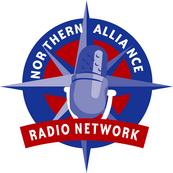Making the Pakistan relief effort happen
One reason I'm interested in keeping track of the Pakistan relief efforts, and also why I first started this with Hurricane Rita, is I'm amazed how efficient this kind of operation seems to be.
I mean, a disaster occurs, and within days huge aircraft and tons upon tons of cargo are moving into remote areas. Personnel are on the move, medical technology is deployed.
If we civilians attempted this we'd still be gathering little boxes of clothes and canned goods, and would be wondering how we were going to get all this stuff halfway around the planet.
Yet the military seems to make this look routine. So, I emailed Marcia Klein of the Defense Logistics Agency with some questions about how these kinds of operations are done. She was kind enough to take the time to answer me. Here's what she said.
Q: Where do the supplies come from? Did they all begin their journey in the States? Did they come from sites closer to Pakistan, or were supplies prepositioned somewhere in case of emergencies?
Q: How do the supplies get from their initial warehouses to the choppers and cargo planes that will bring them to the final destination?
Q: Does the DLA work at all with USAID? I believe USAID is under the State Dept, while DLA is under the DoD, correct? Does USAID conduct its own independent relief efforts?
Q: Rear Admiral Michael LeFever has been named Coordinator, Disaster Assistance Center, Pakistan. Does Adm. LeFever command all the various service branches in this relief effort, and does he coordinate closely with the DLA?
Q: After something like this earthquake occurs, who is the first person or command to take charge, and start coordinating the relief efforts? Who authorizes the effort that Adm. LeFever is coordinating, and who tells the DLA to start performing its tasks?
If any readers have additional information on how operations like this are put together and managed and directed, please feel free to share with the rest of us.
-----
US military relief efforts in Pakistan - Oct 13
More on the Pakistan relief efforts - Oct 14
Pakistan relief efforts continue - Oct 18
I mean, a disaster occurs, and within days huge aircraft and tons upon tons of cargo are moving into remote areas. Personnel are on the move, medical technology is deployed.
If we civilians attempted this we'd still be gathering little boxes of clothes and canned goods, and would be wondering how we were going to get all this stuff halfway around the planet.
Yet the military seems to make this look routine. So, I emailed Marcia Klein of the Defense Logistics Agency with some questions about how these kinds of operations are done. She was kind enough to take the time to answer me. Here's what she said.
Q: Where do the supplies come from? Did they all begin their journey in the States? Did they come from sites closer to Pakistan, or were supplies prepositioned somewhere in case of emergencies?
A: We can't answer for all of the supplies, but we can tell you that in cases where DLA sent supplies or assisted in the shipment, the supplies were from pre-positioned stocks, already there as provisions for deployed troops. I should also note that although we shipped from those forward stocking points that will not be to the detriment of the troops over there -- we ensured that we have sufficient supplies on the ground, and on the way (in the “supply pipeline”), to meet their continuing needs.
Q: How do the supplies get from their initial warehouses to the choppers and cargo planes that will bring them to the final destination?
A: That is a coordination between DLA, which runs the depots and warehouses, and U.S. Transportation Command, which is responsible for DOD's distribution efforts (air and surface), as well as the military commanders and their troops in the area who provide some of the manpower and equipment to help move the supplies. The storage areas are deliberately positioned near transportation shipping points for that very reason.
Q: Does the DLA work at all with USAID? I believe USAID is under the State Dept, while DLA is under the DoD, correct? Does USAID conduct its own independent relief efforts?
A: USAID is an independent federal government agency that receives overall foreign policy guidance from the Secretary of State. DLA does fall under DoD. DLA only supports non-DoD organizations when directed by the Joint Staff (DOD). DLA has not been directed to provide support to USAID, or any other non-DoD organizations for the current earthquake relief effort. Questions regarding USAID relief efforts are best answered by the USAID PAO.
Q: Rear Admiral Michael LeFever has been named Coordinator, Disaster Assistance Center, Pakistan. Does Adm. LeFever command all the various service branches in this relief effort, and does he coordinate closely with the DLA?
A: Questions regarding command relationships between the Disaster Assistance Center and the Service component forces in theater are best answered by the Joint Staff or CENTCOM PAOs. DLA is providing support to forces tasked to support the relief effort by filling requisitions for material. The agency has a DLA Contingency Support Team located in Afghanistan and a Regional Command co-located with the Central Command Headquarters. We are prepared to deploy personnel forward to provide direct support to the Disaster Assistance Center if required.
Q: After something like this earthquake occurs, who is the first person or command to take charge, and start coordinating the relief efforts? Who authorizes the effort that Adm. LeFever is coordinating, and who tells the DLA to start performing its tasks?
A: The U.S. Ambassador in the affected country has initial responsibility for coordination of U.S. relief efforts in a disaster situation. Questions regarding authorization for DoD participation in relief efforts is another question best answered by the Joint Staff or DoD PAOs. DLA provides support at the direction of the Joint Staff.
If any readers have additional information on how operations like this are put together and managed and directed, please feel free to share with the rest of us.
-----
US military relief efforts in Pakistan - Oct 13
More on the Pakistan relief efforts - Oct 14
Pakistan relief efforts continue - Oct 18








0 Comments:
Post a Comment
<< Home